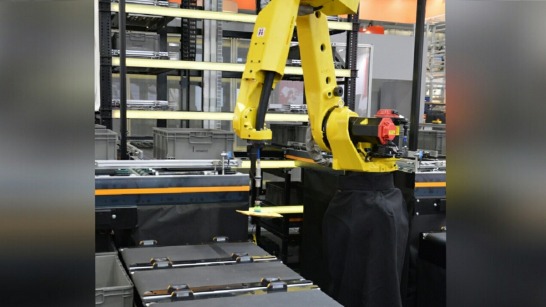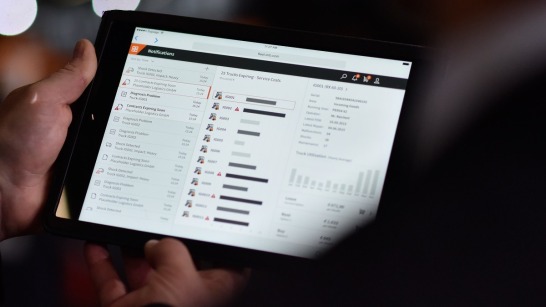Tracking and battery life are no longer an issue
There are a number of stock checking drones on the market, but they all have their shortcomings. Their battery charge might last just 15 minutes, or when stretched, 30 minutes, max. And they often need to be manually controlled. The Linde robotics team responded to these challenges with a simple idea. The Flybox, a prototype jointly developed by Linde and Balyo, is directly connected to an automated Linde truck. “If the customer has to buy a new truck as well, it would be a considerably less attractive proposition,” adds Zierhut. Instead, a customer can use the Linde robotics truck in a variety of ways: to transport pallets in the daytime and to carry the drone at night. Battery life is no longer an issue since the drone is attached to the truck via a robust and tear-proof Kevlar cable.
The connection to the Linde robotics truck also means the drone can be tracked around the warehouse, even without GPS, and is thus truly autonomous. Thanks to geo-navigation in the truck, the system always knows exactly where the drone is. The truck transmits the coordinates on the ground while a height sensor in the drone measures its altitude. “With pinpoint precision,” Zierhut says. The drone, the size of a small briefcase, takes to the air using its six rotors. It then slowly makes its way up the front of a rack, taking a photo of every pallet storage space and using its scanner to capture the bar codes of the stored goods. When it reaches the top rack, it tells the truck to follow it to the next position. The application software allows users to view the photos and bar codes on their screens at any time and automatically transfer them to the inventory management program.
Strong interest in the prototype
Before too long, drones will likely take over stock checking, or at least the tasks involving photo comparing, counting and categorizing. They still can not look inside the packages and boxes, but the Flybox is only a prototype at this stage and is useful for gauging the level of interest in this innovation, which Zierhut says has been really strong. He has been promoting drone at the LogiMat intralogistics tradeshow in Stuttgart, Germany and at other events as well. “It was one of our highlights at the show and we had lots of inquiries.” The next steps involve calculating the development costs in detail and planning exactly how the final version might look. “The relationship between weight and flying capability is likely to be an important factor,” admits Zierhut. The heavier the drone, the more power it will need to fly.
He is convinced that the Group is the leader in this technology, thanks to the expertise at Linde robotics. “The autonomous trucks used by our customers already have the warehouse route and map stored in their systems,” he explains, adding, “So, the route programming required to carry out a stock check could be based on a standard task.” Market launch is likely to be in 2018 at the earliest.
_image_546x307.jpg)

_image_767x563.jpg)
_image_767x563.jpg)
_image_767x563.jpg)
_image_767x563.jpg)

